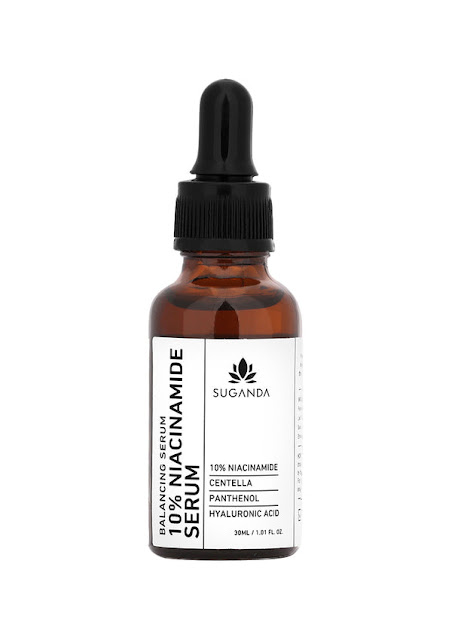HOW TO DEAL WITH ACNE AND PIGMENTATION FOR COMBINATION SKIN
Having a combination skin means more attention as you deal with two skin types at the same time with acne and pigmentation being the prior concern.
As the name suggests, Skin Routine for combination skin can be tricky.
You may have breakouts, blemishes and dryness at the same time, the larger pore size on nose, forehead and chin results in excess sebum secretion. This causes acne and inflammation.
 |
To be precise, Combination skin is the skin type that has an oily T-zone that goes across the bridge of the nose to the tip of the chin and is dry at other regions. The products used should be able to balance oil and also provide enough moisturization which can be quite contrary in nature. Same goes with Acne and pigmentation. Ingredients for acne are more calming and soothing , whereas ingredients for pigmentation can be ones that increase cell turnover.
Now let's decode this complicated routine.
Start with a double cleanserSince, this is for combination skin, You can actually begin with double cleansing. Now, the cleanser you use should avoid oiliness and must prevent your skin from dryness at the same time.
You can opt for an oil-based cleanser with moisturizing properties that would break down the dirt and oil that clogs the skin pores, followed by a water based cleanser which will remove it all.
An additional benefit of double-cleansing is that it eliminates the sebum settled in pores and also dead cells which in turn will avoid close comedones like acne, making your skin look fresh and bright.
Gentle ph friendly face wash -
That is how you can be soft with your skin. You are required to use mild, ph friendly face wash. The skin has a slight acidic pH, that is must to maintain to keep it healthy and resistant to harmful bacteria.
You can opt for the PHA based face wash, as it facilitates the infusion of antioxidants to skin, hydrates and reverses the sun damage as well.
The most important factor to consider is that it is less likely to irritate your sensitive skin, balance the pH levels and also gently exfoliate.
Exfoliate 2-3 times a week -
Exfoliation is a step one should never miss on a skin care routine.This is the most important when it is about combination skin types. You must exfoliate twice or thrice weekly with exfoliation acids, more likely, AHA or BHA.
You can always opt for serum containing Lactic acid, or salicylic acid.
These are best recommended as they are anti-inflammatory and are known to hydrate and tone the skin. In addition to this, they solubilize oil to keep your skin pores clear.
Nourishing Serums:
Keeping care of combination skin is directly proportional to powerpack it with vitamins.
Using serums containing Niacinamide & Vitamin C can really help with both Acne and Pigmentation.
You can even try Azelaic acid which will work great on acne as well as pigmentation.
Introduce Vitamin C based Serum in your daily skin care kit and use it everyday in the morning.
Vitamin C is naturally a brightening agent and has antibacterial properties.
Further, Niacinamide is soothing in nature. Using Niacinamide serum overnight could help in regulation of oil secretion, soothing and healing your skin. Try it out!
Squalane oil
Having combination skin makes it a little confusing when it is time to choose your facial oil. Nothing in particular suits you but then Squalane oil saves the day.
It is ideal for all skin types, hypoallergenic and safer to use. You can always opt to nourish your skin with squalane oil, as it's packed with benefits.
It's emollient properties keeps the skin hydrated, acts as detoxifier and boosts collagen production as well. The antioxidants in squalane oil fights free radicals, preventing damage results in vibrant and healthy looking skin.
Nourishing moisturizer
Though squalane oil makes up for moisturizer, you can always go for some extra nourishment. Hyaluronic acid based moisturizer could be the best pick for combination skin.
It reduces pigmentation and keeps the skin hydrated.
Also, If you use squalane oil, put moisturizer after it, this helps in even infusion of nourishing ingredients to the skin. This is an optional step though.
Your skin needs extra care, and we are here for you. To keep you updated with the knowledge and stuff you require you can always visit us.
Comments
Post a Comment